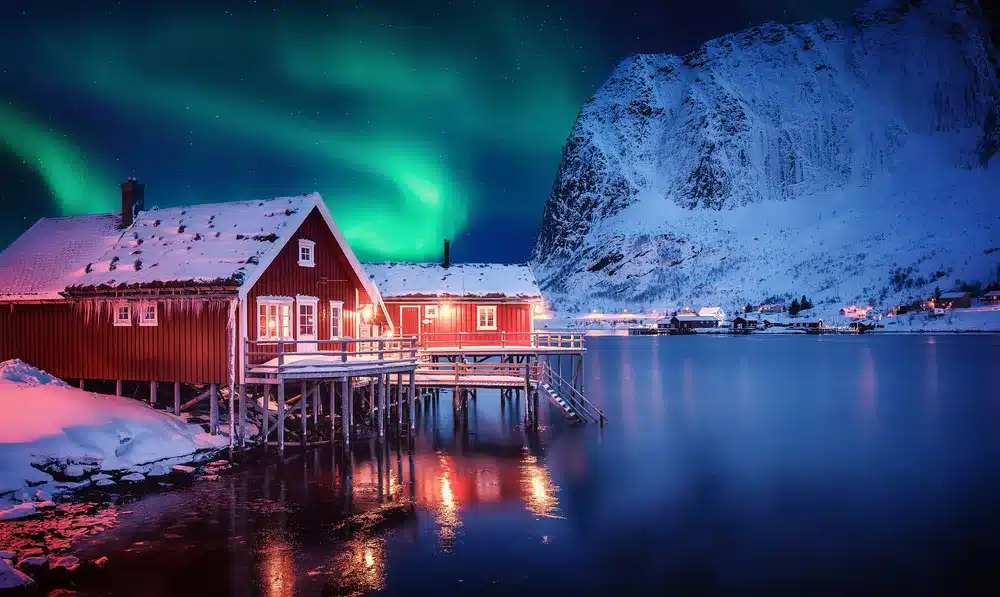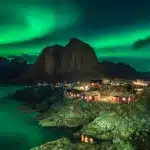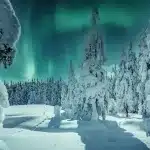
Are you chasing the Northern Lights? This comprehensive guide will walk you through all the steps needed to design an unforgettable winter escape to witness the mesmerising Aurora Borealis. From choosing the best locations and timing your trip right to packing crucial and capturing the perfect photographs, this article will equip you with all the knowledge and tips required to make your dream Northern Lights adventure a reality.
We will give you the following 6 tips on how to plan the perfect Northern Lights winter getaway
Key Takeaways:
- Please choose the right destination: Select a destination known for its clear skies and high Northern Lights activity, such as Iceland, Norway, or Finland.
- Pick the best time of year: Plan your trip between late September and March for the best chance of seeing the Northern Lights.
- Book accommodation in remote locations: Opt for lodges or hotels away from light pollution to maximise your Northern Lights viewing experience.
- Stay prepared for changing weather conditions: Pack warm clothing, hand warmers, and a camera or tripod to capture the spectacle of the Northern Lights.
- Consider guided tours: Joining a Northern Lights tour with experienced guides can increase your chances of seeing the Aurora Borealis and provide valuable insights.
Essential Photography Tips for Chasing the Northern Lights
Here are some suggestions for guided Aurora Borealis tour operators:
1. Pre-Trip Planning

Tips for Choosing the Best Destination
You’ve decided to initiate a mesmerising Northern Lights winter getaway, but where should you go? Consider opting for destinations known for their clear skies and minimal light pollution. Think of places like Tromsø in Norway, Iceland’s remote countryside, or Finland’s Lapland region. These locations offer optimal conditions for spotting the elusive Aurora Borealis.
- Look for destinations with clear skies and minimal light pollution.
- Consider popular spots like Tromsø, Iceland, or Lapland.
- Assume that these places will provide the best chances for Northern Lights sightings.
Factors Influencing Visibility of the Northern Lights
There’s more to seeing the Northern Lights than just picking a destination. Factors such as the intensity of solar activity, weather conditions, and the absence of artificial light all play a role in visibility. Keep an eye on the aurora forecast and choose nights with high geomagnetic activity for better chances of witnessing the spectacle.
- Aurora intensity and solar activity impact visibility.
- Weather conditions and light pollution can affect sightings.
- Thou should monitor the aurora forecast for optimal viewing opportunities.
Planning a Northern Lights winter getaway requires careful consideration of various factors. Among them include choosing the right destination with clear skies and minimal light pollution, such as Tromsø, Iceland, or Lapland. Additionally, staying informed about the aurora forecast and selecting nights with high geomagnetic activity can increase your chances of witnessing the mesmerising natural light show.
2. Timing Your Trip
How to identify the Peak Season for Aurora Viewing
One of the most crucial factors to consider when planning a Northern Lights winter getaway is timing your trip right. To identify the peak season for aurora viewing, research the aurora forecast for the region you plan to visit. Typically, the best time to see the Northern Lights is during the winter months when the nights are longer and darker, and the geomagnetic activity is at its peak.
Analysing Weather Patterns and Moon Phases
It would be best to analyse weather patterns and moon phases to increase your chances of witnessing the magical display of the Northern Lights. You can utilise weather forecasting websites to track clear skies and plan your trip during a new moon phase, when the skies are darkest, enhancing the visibility of the auroras against the night sky.
Moon phases play a crucial role in aurora viewing as the moon’s brightness can impact the visibility of the Northern Lights. A new moon or a moon in its crescent phase is ideal for aurora viewing as it provides the darkest possible skies for the auroras to shine brightly.
3. Preparing for the Journey

Essential Gear and Clothing Tips
Not to be underestimated, packing the right gear and clothing is crucial for a successful perfect Northern Lights winter getaway. Bring insulated, waterproof boots, warm socks, thermal base layers, a windproof jacket, gloves, a hat, and hand warmers. Consider packing a headlamp for hands-free light on dark Arctic nights. Remember to pack extra batteries for all your electronic devices to ensure you can capture those mesmerising moments.
Photography Equipment and Techniques
Techniques for capturing the Northern Lights on camera can be challenging and rewarding. With the right photography equipment and techniques, you can immortalise the beauty of the aurora borealis. Consider bringing a DSLR camera with a wide-angle lens, a sturdy tripod, and an extra memory card. Research camera settings in advance to achieve the best results in low-light conditions. You can capture stunning images of the dancing lights in the sky with experimentation and patience.
4. On-Site Strategies
How To Optimise Your Chances Each Night
Your best chance to witness the mesmerising Aurora Borealis display is during the darkest and clearest nights. Check the weather forecast to choose evenings with minimal cloud cover. Additionally, position yourself away from light pollution for optimal viewing. Patience is also crucial, as the lights might appear suddenly and vanish just as quickly.
Safety Measures and Sustainable Tourism Practices
Tourism in Northern Lights destinations is responsible for respecting the delicate environment and local communities. Ensure you travel with certified guides who follow sustainable tourism practices and prioritise safety. Stay on designated paths to protect the natural habitat, and never disturb wildlife or vegetation in pursuit of the perfect photo. By practising responsible tourism, you can help preserve these breathtaking destinations for future generations.
Dress Warmly and Pack the Right Essentials
When embarking on a Northern Lights winter getaway, always dress warmly in layers and pack essentials like a headlamp, snacks, and water. It’s crucial to stay hydrated and nourished during outdoor excursions to avoid cold-related health issues. Respect any safety guidelines your tour operator or local authorities provided, and be mindful of your environmental impact. By prioritising safety and sustainability, you can fully enjoy the magic of the Northern Lights while safeguarding the natural beauty of the Arctic regions.
5. Enhancing Your Experience

Incorporating Cultural Activities and Daylight Excursions
While the main attraction of your Aurora Borealis winter getaway may be the aurora borealis, incorporating cultural activities and daylight excursions can add depth and richness to your experience. Consider visiting local museums, trying traditional cuisine, or launching a guided tour to learn more about the history and traditions of the region.
6. Tips for Staying Comfortable and Enjoying the Wait
Assuming that viewing the Aurora Borealis can involve some waiting time, staying comfortable and prepared is essential. Dress warmly in layers, bring a thermos of hot beverages, and pack snacks to keep your energy up. Additionally, consider bringing portable seating for added comfort while you wait.
- Wear warm and comfortable clothing.
- Bring a blanket or warm sleeping bag.
Also, remember that patience is vital when witnessing the Aurora Borealis. Be prepared to wait for the optimal viewing conditions, as the natural phenomenon is unpredictable and may require some time before appearing. However, the wait will be worth it once you witness the magical dance of colours in the night sky.
In conclusion, from the above tips and tricks, planning the perfect Northern Lights winter getaway can be an exciting and fulfilling experience. Travellers can maximise their chances of witnessing this mesmerising natural phenomenon by choosing the right destination, timing, and activities. Whether opting for a guided tour or planning a DIY trip, it is vital to prepare adequately for extreme weather conditions and be flexible with plans to account for unpredictable weather patterns. With proper research and organisation, anyone can enjoy a magical winter adventure under the dancing lights of the Aurora Borealis.
FAQ
-
What are the best locations to view the Northern Lights during a winter getaway?
The best locations to view the Northern Lights during a winter getaway include Tromsø in Norway, Reykjavik in Iceland, and Abisko in Sweden.
-
When is the best time of year to plan a Northern Lights winter getaway?
The best time to plan a Northern Lights winter getaway is typically between September and March when the nights are long and the skies are dark enough to see the aurora borealis.
-
How should I dress for a Northern Lights winter getaway?
It is important to dress warmly in layers for a Northern Lights winter getaway. Pack thermal clothing, wool socks, insulated boots, a hat, gloves, and a winter jacket to stay comfortable in the cold temperatures.
-
What activities can I enjoy during a Northern Lights winter getaway?
Besides viewing the Northern Lights, you can enjoy activities such as dog sledging, snowmobiling, ice fishing, and visiting traditional saunas during a winter getaway in the Northern Lights region.
-
How can I increase my chances of seeing the Northern Lights during my winter getaway?
To increase your chances of seeing the Northern Lights during your winter getaway, choose a destination with clear skies away from light pollution, check aurora forecasts, and be prepared to stay up late or wake up early as the aurora is most active during the late evening and early morning hours.
Amazing facts about the Northern Lights and where to see them In Norway







